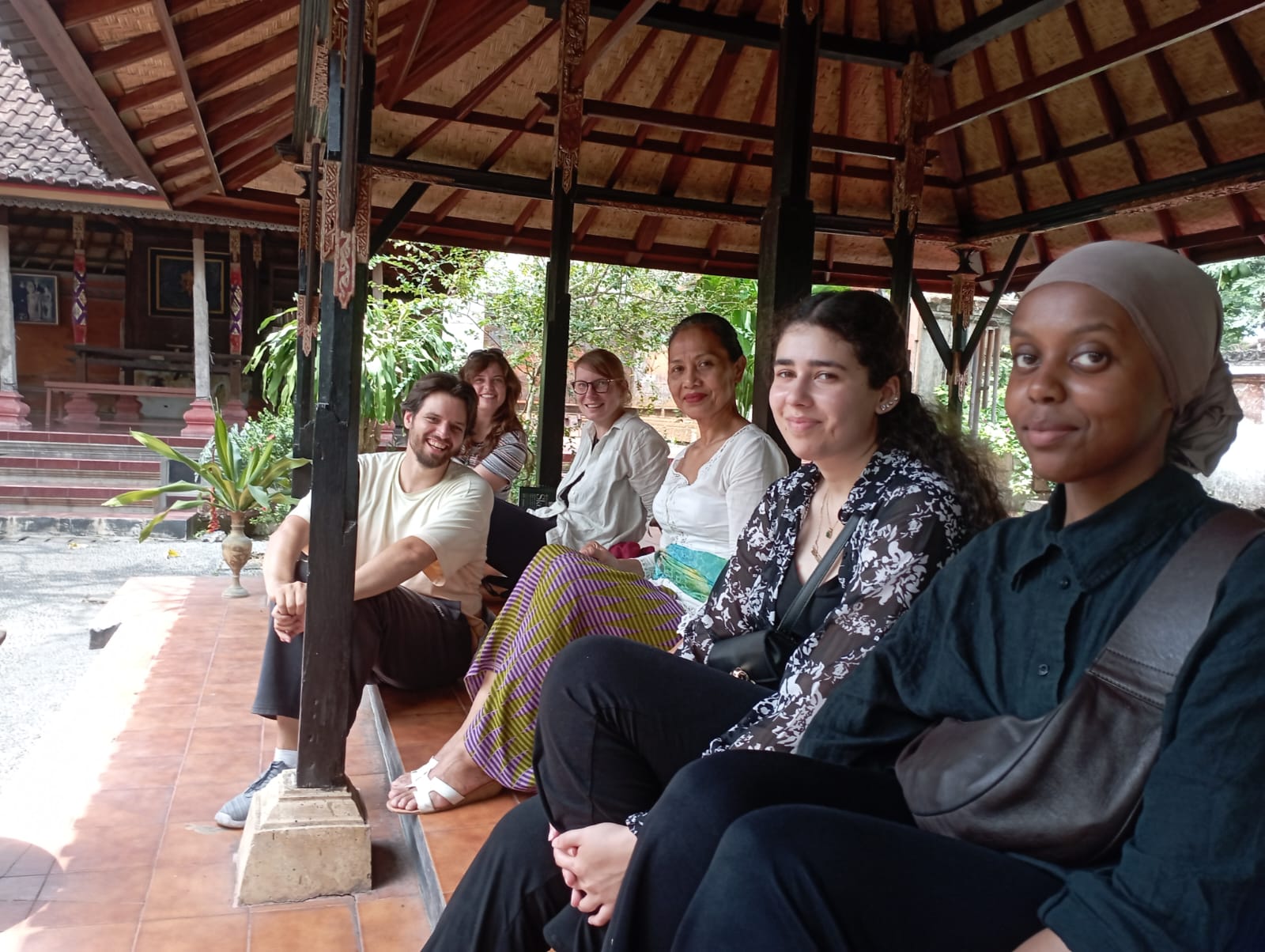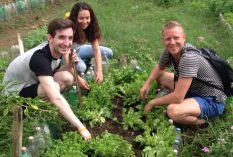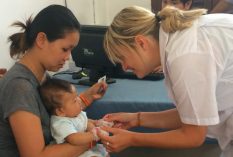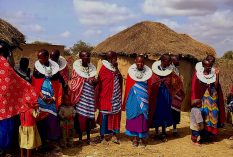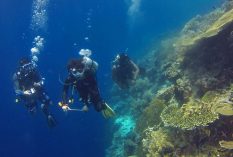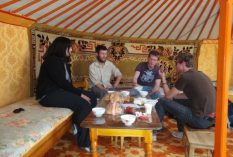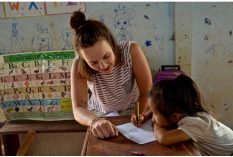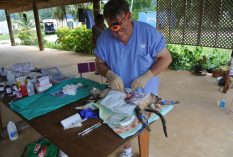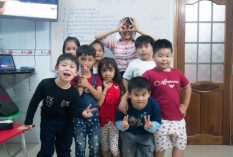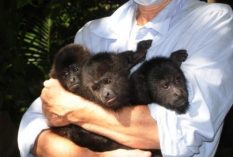I Made Chakra grew up here; for the past 50 years he has been apart of this community and watched it evolved. With the Green Revolution sparking a mere four years before his birth, he slowly witnessed its transformation. From fireflies, herons, eels and snails in the rice fields (or ‘subaks’) to chemicals and poisoned farmers. A place where you could once drink almost directly from the subaks to an area where you bring water with you everywhere. With only 3km between his home and the city center of Ubud (one of the busiest/most visited places in Bali) he has watched this area go from rice fields as far as the eye could see to villas and cafes taking their place. Chakra is working tirelessly to bring a semblance of his childhood back to life, in ways that his community does not always understand.
A little about me, I am an Environmental Geoscientist with specialties in Anthropology, Biosphere, and Geology. I have a history in hazardous waste management with a Heritage Environmental Services, at a company (who shall remain nameless) that is largely responsible for the modern techniques used in agriculture around the world (i.e. seed modification and pesticides and herbicides). I needed out; I have always dreamed to be apart of the bigger picture of environmentalism. To create a world that analyzes human activity and alters it in order to work in harmony with the world around us; plate tectonics, geology, flora, fauna, economics, healthcare, transportation, culture and the arts.
All this to say I have been training my entire life for an experience such as this.
When I came across Global Nomadic and saw that they offered a plethora of Environmental volunteer opportunities, I knew I had to jump at it. I filled out the application at about 1:30am on a whim, and by the next morning I had gotten a response from Chakra accepting me into his program. Aghast, I got to work. I already had two jobs, one as an Environmental Chemist, and the other as a server at a local pizza place. For the next four months I would work seven days a week, 70 hours a week. While I did reach out to others for financial support through this journey, my call remained unanswered. I began the planning about three months before my start date, although I knew I was a little out of my depth, I did it. I booked flights with four different airlines, reached out to a Visa agency in Bali to get my B211a visa prior to arrival, got half a dozen vaccines, did deep dive internet searches on both Global Nomadic and Tri Hita Karana, got an international drivers license, and even printed off all essential paperwork in triplicate to make sure I had everything I needed. I brought a mosquito net, water proof socks, three different kinds of bug repellent, and even a multi-tool with a hatchet. When coming here I was fully aware that what I was signing up for was not a simple opportunity to travel across Bali with a boost to my resume; this was going to be real work, as well as a life changing experience, involving materials and practices that were going to be absolutely foreign to me.
My time with Chakra and Tri Hita Karana started on a Sunday morning after 25 hours of flight time across the globe, leaving me with a 13 hour time difference between me and everything I have ever known. We left the airport and swiftly made our way through the hoards of traffic in Denpasar and after I acquired a SIM card (cause my mama taught me never to get in the car with strangers) I was able to fully absorb the drive through Bali in awe: the culture, the way people drove, the architecture, and even seeing how some of the restaurants I was familiar with have adapted. Once I arrived to the Permaculture house, I saw just how dedicated Chakra was: a natural swimming pool with crystal clear water, a composting toilet, sustainable construction, dozens of bee boxes, multiple composing bins that are taller than me (5ft 4in or 1.6m for reference), and hot water powered by passive solar powered heating.
After sleeping for 13 hours I woke up early on Monday morning, took a shower, and emerged from my new cave to find Chakra, bright eyed and bushy-tailed, inviting me for my first walk around the village I will be calling home for the next six weeks.
Now I would also like to preface this by saying that the rumors are true: pollution is everywhere, and water is very clearly a problem in Bali. However, one of the first things that stood out to me was just how many different kinds of fruits were sprinkled along our path: mangos, noni, coconut, dragon-fruit, New Zealand cherries, and so many more. There was also magnificent trees, such as the Banyun tree, and the White Milk tree. [The Banyun tree holds great cultural significance because it typically signifies a local market, due to its extreme height and width (roots grow down from the branches and overtime create separate supporting trunks). The White Milk tree is a great biological indicator for fresh ground water, and often if you dig near one or chop one down, you are able to find an underwater spring.] You can also find fish in the local waterways, located along roads, that help purify the local water as well as provide a biological indicator for contaminated water (dead fish = bad water). The most noteworthy however, is the people, whom are so accommodating and friendly; not once have I felt unwelcome.
These are not always attributes that you can find in the United States.
Our first venture took us to a local hotel/restaurant established being developed by a company called ‘Locavore’ who hired Chakra to establish a sustainable water filtration system. The waste water produced would include kitchen waste, human waste, sink, and gardening runoff. The most prominent feature was a wetland system, consisting of a bed of lava rock (which would filter out some basic contaminants) and succulent plants (whose root systems would help break down bacteria and utilize unwanted nutrients) fed by a pump system, moving the grey/black water into the the wetland system and eventually into a pond home to a community of fish, whom continue to break down the unwanted water contaminants. In the middle of this pond is a vortex fountain that would oxygenate the water. Behind the scenes, there would also be a worm (‘vermi’) system, black soldier flies, and bacterial system that would all aid in the purification of the water produced by this establishment. While this system may seem complex, all aspects are easily replicable, adaptable, and replaceable. Making this a prime example for sustainable and appropriate technology.
Not every project was this straight-forward however;Chakra has taken on a new venture that veers into the cultural realm: a community garden. In order to kickstart this project he needs to acquire approval from the head of the village to use this community land and transform it into a sustainable, accessible, and prosperous market for fresh foods in his community. While this seems like an easy feat, it faces its own challenges. Like many people and enterprises, money is in demand, and with the location of this property in high demand to those who build the Pinterest worthy villas and cafes. Aside from that this land has been used as an unofficial dump site for local trash to those in its vicinity. Will the needs of the communities nutrition and agriculture practices outweigh those in need of money and disposal conveniences? Only time will tell.
Chakra faces a lot of challenges similar to these. For example, the rice farmers that are common in this area, who have been using primarily artificial fertilizers and pesticides have some fairly simple and cost efficient solutions, but impede on the cultural constructs that have been put in place. The top terrace would be a prime location for livestock (known as the penalopin), whom would provide a natural supply of fertilizer for the field bellow it. Unfortunately, this terrace has been marked as ‘sacred’ and the locals refuse to contaminate this land with the filth of livestock. The origin of this plot being classified as sacred comes from the seeds; the best seeds would be found in the top terrace due to the highest amount of nutrients in it’s soil – this knowledge has been lost. Chakras goal is to one day teach the community why this field was considered sacred, or rather teach the origins of these beliefs.
Cultural impediments was the topic of a lecture I had the pleasure of attending (The 5th International Conference on Biosciences and Engineering/ The 2nd International Conference on Innovative Agricultural Technology). This is where we discussed amongst a committee whom were all focused in advancing technology to become more accessible and accommodating to cultural and communal needs. This is where he spoke with Sharon Dixon from ACU who both focused on how food has changed with the current standards. Heritage crops have adapted to their environment, and with them, the nutritional needs of the people, whom are currently at a deficit.
There has been a surplus of brith complications with women in this region due to insufficient nutrition in their common diet (rice). There is also a surplus of diabetes and heart disease in the Balinese people in recent years; with the rise of Westernization/Globalization a cheaper and more accessible food supply of processed foods in the region, this is no surprise. Chakra likes to joke that those who eat Red Rice (a heritage strain) tend to be healthier and have a higher resistance to disease, but this absolutely has some truth to it. Referring back to the fight for the community garden, the head of the village happened to be sick for a few days in which Chakra had hoped to get in contact with him. Would he be healthier if the food was less modified/processed? Only progress would help us find out. Or lets talk about my transition between the States and Bali; when i first arrived I had to adapt to the food here, because it is cleaner and their are less additives, my stomach had to detox from all the foul contents that the states have been feeding me for years. Since being here I have not felt more clear of mind or more physically capable. Will being here and eating the food here help me not develop my predisposed diagnosis of cancer? That might be too big of a question for the answers that are obtainable, but nonetheless, I have lost 15lbs in the three weeks I have been here, so far.
Working with Chakra has allowed me to see various aspects of the field I will do anything to be apart of one day. He has included me in several consulting opportunities; one included how we can make organic heritage rice farming more appealing to local Suback (rice paddies) owners, another was how we could convert underdeveloped rice terraces into a flourishing agroforestry system, and most importantly, how we can adapt local customs to allow for more agricultural practices. Permaculture is a collaborative practice that requires perspectives from many different people, such as: appropriate technology experts, nutritionists, civil engineers, cultural leaders and environmentalists.
As such, it is not a singular study, but rather it is many different studies and practices that collaborate in order to achieve their ultimate goal: people working with nature in order to be productive as well as healthy.

